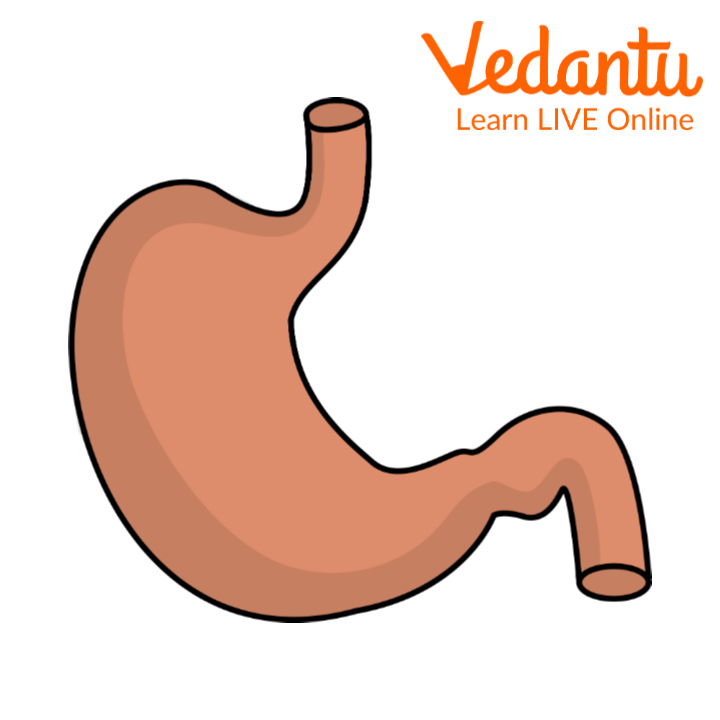




An Overview
We eat various types of food from fruits and vegetables to highly processed junk food. All of this food is eventually broken down into smaller and simpler substances by the cells of our body. This breakdown of food into simpler substances is known as digestion. This process involves various organs of our body working together in a coordinated manner. It includes the mouth, the teeth, the tongue, the food pipe, the intestine etc. The stomach plays a very crucial role in this process. In this article, we will discuss about the stomach in detail.
What is a Stomach?
The stomach of a human is located on the upper left side of the abdomen. An adult's stomach is about 10 inches (25 centimetres) long. It can hold up to 1 quart (0.9 litres) of food. Gastric juices are produced by the stomach glands which contain HCl (Hydrochloric acid). Food is partially broken down by these juices. The inside of the stomach is protected from gastric juices by a mucus lining. Stomach muscles perform churning movement when food enters the stomach and therefore, it combines food and gastric juices. Here, food is converted into semi-liquid form and protein digestion begins in the stomach. The stomach also transports food to the small intestine.

The Stomach
Functions of Stomach
The purpose of the stomach is to digest food and send it to the small intestine for further digestion. It has three major functions:
It stores the food temporarily for about four to five hours.
It helps in grinding the food particles with the help of its wall.
Produce enzymes and other specialised cells to aid in food digestion.
Stomach: Other Animals
Other animals' stomachs differ significantly from humans; many have multiple-chambered organs or special adaptations. Cows' and most cud-chewing (ruminant) animals' stomachs are divided into four sections. The rumen receives food first, where mucus is added and cellulose is broken down. It then returns to the mouth to be thoroughly rechewed. When it is swallowed again, it travels to the reticulum and omasum, the second and third chambers, where water is extracted and absorbed. The food is then transported to a final chamber, the abomasum, to be digested by enzymes. Birds have three chambers whereas rodents have only one stomach area. Starfish can turn its stomach upside down and crayfish produce stones of calcium in their stomach.
Facts About Stomach
It is a muscular bag in our body that churns the food.
Even after having their stomach removed, a person can survive by changing their diet and eating more frequently and in smaller portions.
The maximum time required to digest a normal meal is five to seven hours or more. Protein- and fat-rich foods take longer to digest than high-fibre foods.
There is no relationship between a person's weight and stomach size. Both the thin and the obsessed have the same stomach size.
Our immune system's first line of defence is the stomach. The acid in our stomach sterilises and kills the bacteria and other toxins found in the food we eat.
The stomach is the only organ in the digestive system with three muscle layers.
Animals like seahorses and lungfish have no stomachs.
Solved Questions
1. How many chambers does a cow's stomach have?
Ans: A stomach has four chambers.
2. Write a short note on the human stomach.
Ans: The stomach is the organ that receives food through the oesophagus. It acts as the storage organ. It is round, hollow, muscular and expendable. It is internally located in the body and is J-shaped.
3. How many hours does a human stomach store food?
Ans: It stores food for about four to five hours.
Learning by Doing
Write true/false for the following.
Stomach is a C-shaped organ________
Animals like seahorse has no stomach_________
The stomach is the only organ in the digestive system with four muscle layers______.
Summary
The stomach is the digestive system's largest, hollowest, most muscular, expendable and most important organ. It is a bean-shaped, sack-like structure found behind the lower ribs and between the oesophagus and small intestine. The stomach's primary function is to secrete gastric juices, digest food molecules and store them. The stomach can hold more than a quarter-gallon or half-pound of food on average.
FAQs on The Human Stomach: A Muscular Bag That Churns Food
1. Can you live without a stomach?
Yes, one can live without a stomach as the body can adapt to bypass the stomach's main function which is to store and break the food components.
2. What is the size of the stomach?
An adult's stomach is about 10 inches (25 centimetres) long.
3. What kind of food is digested the fastest?
Sugary junk foods.









